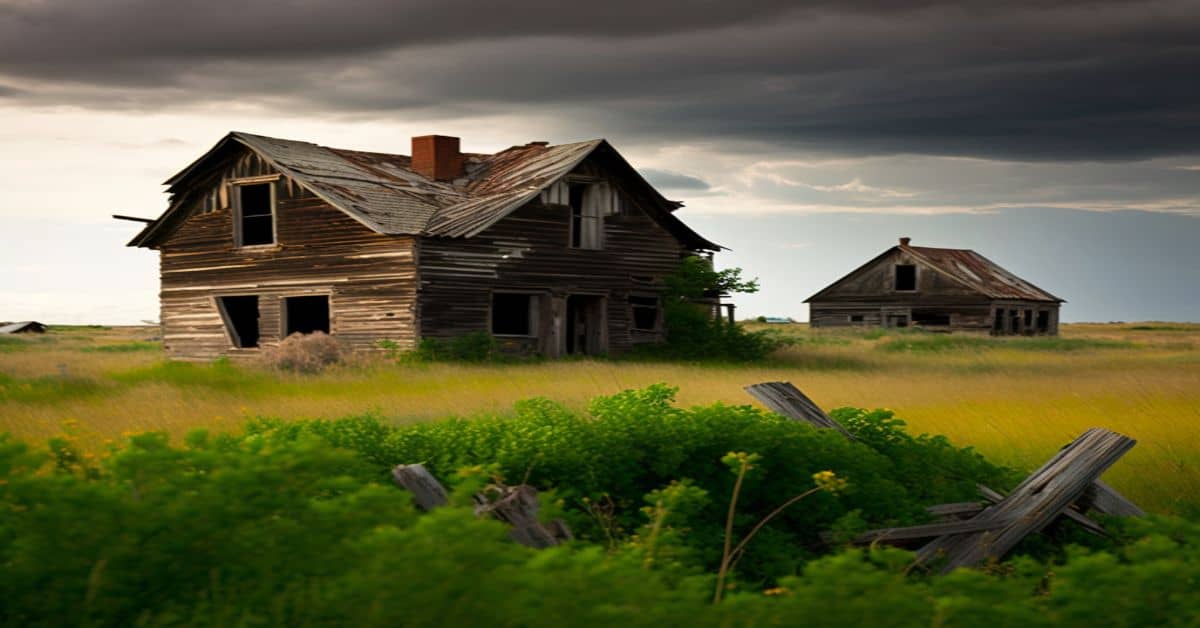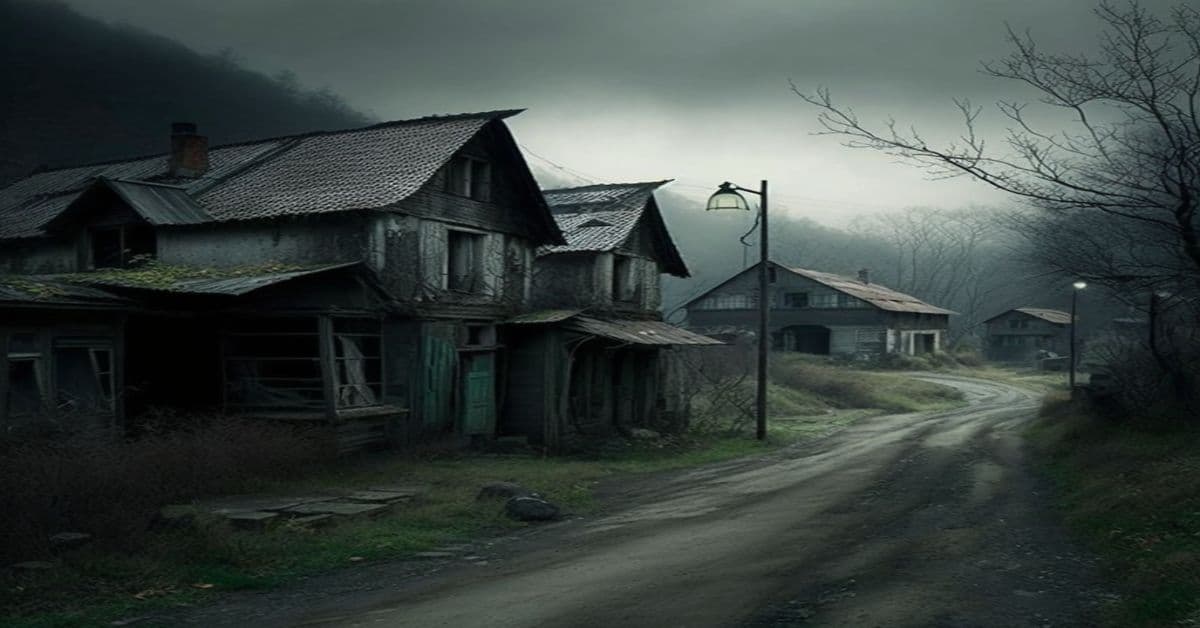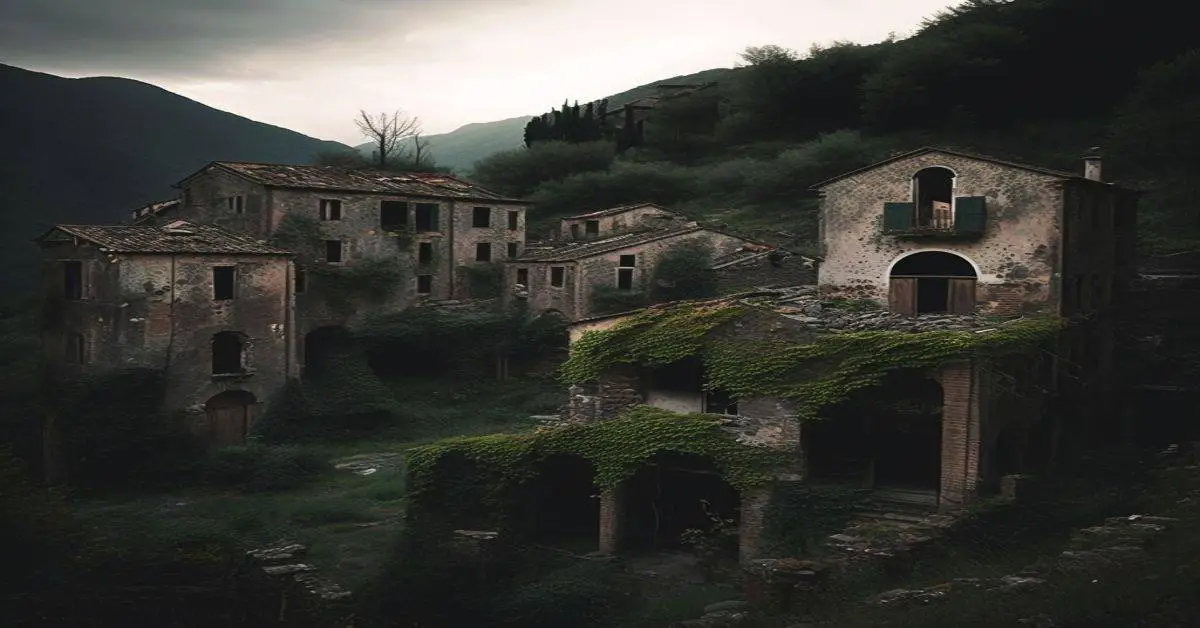Oysterville, a semi-ghost town located on the shores of Willapa Bay in Pacific County, Washington, has a haunting history that is both captivating and eerie. Founded in 1854, the town was once a thriving community with churches, schools, canneries, and other businesses. However, the town’s prosperity was solely based on the oyster canning industry, and the depletion of oyster beds led to the town’s demise.
Despite its decline, some original buildings remain, and visitors can explore the town’s haunted history while enjoying the cool climate of the Pacific Northwest.
The history of Oysterville is rich and complex, with stories of success and failure, preservation and decay, and life and death. From its early days as a bustling oyster canning center to its current state as a semi-ghost town, Oysterville has seen it.
Its legacy is determination, resilience, and the will to survive adversity. This article will delve into the haunting history of Oysterville, exploring its location and infrastructure, industry and economy, and history and preservation.
Through a detailed and analytical approach, readers will gain a deeper understanding of this fascinating town and the stories that haunt its streets.
Key Takeaways
- Oysterville was once a thriving community with around 300 people, heavily dependent on the oyster canning industry.
- The depletion of oyster beds devastated the town’s economy, leading to its demise.
- Oysterville’s singular dependence on the oyster canning industry meant the town could not diversify its economy, making it vulnerable to industry fluctuations.
- Preservation efforts by the Oysterville Restoration Foundation have been ongoing, with the town being listed in the National Register of Historic Places in 1976, and visitors can explore the town’s haunted history while enjoying the cool climate of the Pacific Northwest.
Location and Infrastructure
Oysterville, a semi-ghost town founded in 1854 by R.H. Espy and I. A. Clark, is situated on the shores of Willapa Bay on North Peninsula and has a 6-grid infrastructure with 2WD roads and two deep-water wharves constructed in 1884 and 1888.
The town had a population of around 300 people during its prime years, and its infrastructure supported various businesses, including churches, schools, canneries, and other enterprises. The town’s location on the bay made it ideal for oyster canning, the primary industry that brought prosperity to the town.
Oysterville’s natural environment features a cool climate throughout the year, making it an ideal place to visit anytime. The town’s location on the shores of Willapa Bay also provided residents with easy access to various natural resources, including fish and shellfish.
However, the depletion of oyster beds ultimately led to the town’s demise, and today, only a few original buildings remain, making Oysterville a haunting reminder of a bygone era.
Despite its ghostly status, the town’s location and infrastructure continue to attract visitors interested in learning more about its history and exploring the area’s natural beauty.
Industry and Economy
The economic prosperity of the town of Oysterville was heavily dependent on the oyster canning industry. The town emerged as a major player in the industry in the late 19th century, with its location on the shores of Willapa Bay providing an ideal environment for oyster cultivation.
However, the depletion of oyster beds had a devastating impact on the town’s economy. Oysterville’s singular dependence on the oyster canning industry meant that the town could not diversify its economy, leaving it vulnerable to the depletion of its main resource. As the oyster beds were depleted, many businesses were forced to close, and the town’s population declined.
Oysterville’s fate highlighted the vulnerability of a single-industry town, as the town’s economy could not recover from the depletion of oyster beds. The story of Oysterville serves as a cautionary tale for other towns that are heavily dependent on a single industry, highlighting the importance of diversification in creating a sustainable economy.
History and Preservation
Located on the shores of Willapa Bay, the town founded in 1854 has managed to preserve some of its original buildings, providing a glimpse into the past and the history of the Pacific County.
Preservation efforts have been ongoing in Oysterville, with the town being listed in the National Register of Historic Places in 1976. The Oysterville Restoration Foundation has been instrumental in preserving and restoring many of the town’s historic buildings, including the Oysterville Church, the oldest continuously used church in Washington State.
Apart from its architectural significance, Oysterville also holds cultural significance. The town was once a thriving center for oyster canning, and its history is closely linked to the oyster industry. The depletion of oyster beds led to the town’s decline, but the legacy of the industry is still evident in the town’s architecture and culture.
Visitors can explore the historic buildings and learn about the town’s past through the Oysterville Interpretive Center, which features exhibits on the town’s history and the oyster industry. Preserving Oysterville’s history and cultural heritage is vital in keeping the memories of a once-thriving community alive.
Frequently Asked Questions
What is the current population of Oysterville?
Population statistics for Oysterville are unavailable as it is a semi-ghost town with very few residents. Demographic trends suggest a declining population due to the depletion of oyster beds and lack of economic opportunities.
Are there any ghost sightings or paranormal activities reported in Oysterville?
There are no reports of haunted houses or supernatural legends in Oysterville. While the town may be considered semi-ghost, it is not known for any paranormal activities.
What other types of seafood were harvested or processed in Oysterville besides oysters?
Oysterville, besides oyster canning, also had a flourishing crabbing industry. Fishing techniques included using traps and hand lines. However, the town’s prosperity was predominantly based on the oyster industry, ultimately leading to its downfall.
Was there any notable historical figure or event associated with Oysterville?
Notable historical figures or events associated with Oysterville are not mentioned in the provided background information. However, some original buildings still remain, such as two deep-water wharves, which serve as significant landmarks.
Are there any plans or efforts to revive or restore the town’s economy and infrastructure?
Efforts to revitalize Oysterville’s economy and infrastructure have been ongoing, with community involvement playing a crucial role. The town’s historic buildings and location on Willapa Bay offer potential for tourism and small businesses.



